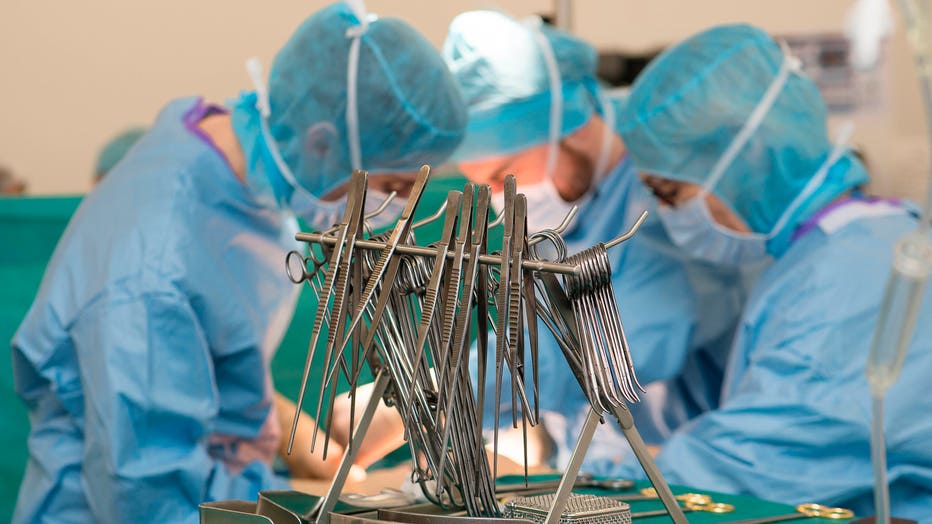Organ transplants make a turnaround from COVID-19 decline
Along with so much else across America, the coronavirus jolted the system that provides lifesaving organ transplants. As hospitals scrambled and doctors grappled with the risks to patients, the number of procedures plummeted.
Yet by early June, transplants were almost back to pre-pandemic levels, and heart transplant specialists credit a mix of factors.
RELATED: CoronavirusNOW.com, FOX launches national hub for COVID-19 news and updates
Each year, about 40,000 people receive transplanted organs in the United States. In 2019, that included 3,551 heart transplants. But by early April, transplants of all types had fallen by half, a study in The Lancet found.
Many things contributed to that drastic decline, and problems varied by region. But in the earliest days, doctors' main worries were basic.
"There was a concern from the beginning that these patients might be at increased risk for both becoming infected with coronavirus and then potentially having worse outcomes," said Dr. Michael Givertz, a professor of medicine at Harvard Medical School. Givertz, who also is medical director of Heart Transplant and Mechanical Circulatory Support at Brigham and Women's Hospital, co-wrote an April report in the American Heart Association's journal Circulation about the challenges of transplants in the pandemic.
Lack of testing was a key problem, said Dr. Mark Drazner, clinical chief of cardiology at UT-Southwestern Medical Center in Dallas.
"Early on, there were considerations concerning the safety of accepting donors because you didn't know if the donors might be infected" with the coronavirus and whether it would transmit to the recipient, he said.
Doctors also worried about the risk of patients falling ill after surgery. Transplant recipients take powerful drugs to suppress their immune systems, Drazner said. "So another concern was – you transplant them and get through that safely, but then they end up getting COVID when they leave the hospital, right at the time where their body is really weakened from the immunosuppressive medications."
COVID-19 overwhelmed many hospitals. One survey, taken in late March and published in the American Journal of Transplantation, showed what transplant centers were up against: About 43% reported shortages of COVID-19 tests, and around three-fourths expected shortages of personal protective gear, intensive care unit beds and blood products.
And fewer organs were available to transplant. Givertz said that's partly because as people stopped leaving home, deaths from causes that create potential organ donors declined: car crashes, work-related injuries, crime and opioid abuse. The United Network for Organ Sharing, which manages the nation's transplant system, says donations bottomed out in late March and early April.
In hospitals with lots of coronavirus cases, resources were stretched.
"As the ICUs were busy taking care of COVID-19 patients, they didn't actually have the capacity to be taking care of potential organ donors," Givertz said. Because of travel restrictions, surgeons stopped flying to operate on donors. Hospitals had no protective gear for donor teams. Some hospitals wouldn't allow outside personnel in.
At this point, he said, some programs took stable patients off transplant waiting lists and said, "We're only going to do transplants in our sickest patients.“
But by May transplants nationwide began to increase and have leveled off close to pre-pandemic levels, UNOS says.
"I think all the programs had to decide what to do," Drazner said. Transplants amid a pandemic put people at risk. But not doing transplants also put people at risk. "There's some who if you don't transplant them, they might not be alive in a week or two.“
One big factor in resolving that dilemma, he said, was early reports about how the coronavirus affected recipients. "It did not appear that every heart transplant patient who got COVID was going to die," he said. "In fact, in some reports, the severity of the illness was not totally dissimilar to the general population. I think that provided reassurance.“
Also, testing became more available, so doctors could confirm if both donor and recipient were COVID-negative. Also, as cases of COVID-19 appeared to be leveling off in many areas, ICUs opened up.
And, Givertz said, patients helped themselves.

Nationwide, transplants started to increase by May and have leveled off close to pre-pandemic levels, according to the United Network for Organ Sharing. (Photo by: BSIP/Universal Images Group via Getty Images)
Even in normal times, potential transplant patients "have to be deemed to be excellent self-care providers," he said, capable of obeying strict rules about medications and more. Heart transplant patients "generally have been extremely cautious with masking, physical distancing, avoiding contacts outside of the hospital and trying to minimize any need to come into the hospital.“
With those precautions, the rate of infection for immunosuppressed patients doesn't seem to be higher than in the general population, he said, although full data isn't available.
Still, Drazner said patients need to be extra cautious about anti-coronavirus measures. At his medical center, heart transplant recipients are advised against doing cardiac rehab in a group setting, for example.
He also encouraged people who are awaiting transplants to be careful about where they get their medical advice. "Your doctor, your heart transplant team, know you best. Rely on them.“
In the big picture, Givertz said, much more will need to be done to help people with the problems that heart transplants can fix.
"There are 6.2 million people living with heart failure and maybe a quarter million people with advanced heart disease who could potentially benefit from a heart transplant," he said. "And there's only 3,500 heart transplants a year. So, we still have a huge amount of work to do.“
RELATED: WHO chief warns world leaders not to 'politicize' coronavirus pandemic
Editor's note: Because of the rapidly evolving events surrounding the coronavirus, the facts and advice presented in this story may have changed since publication. Visit Heart.org for the latest coverage, and check with the Centers for Disease Control and Prevention and local health officials for the most recent guidance.
This story was originally published by American Heart Association News.


